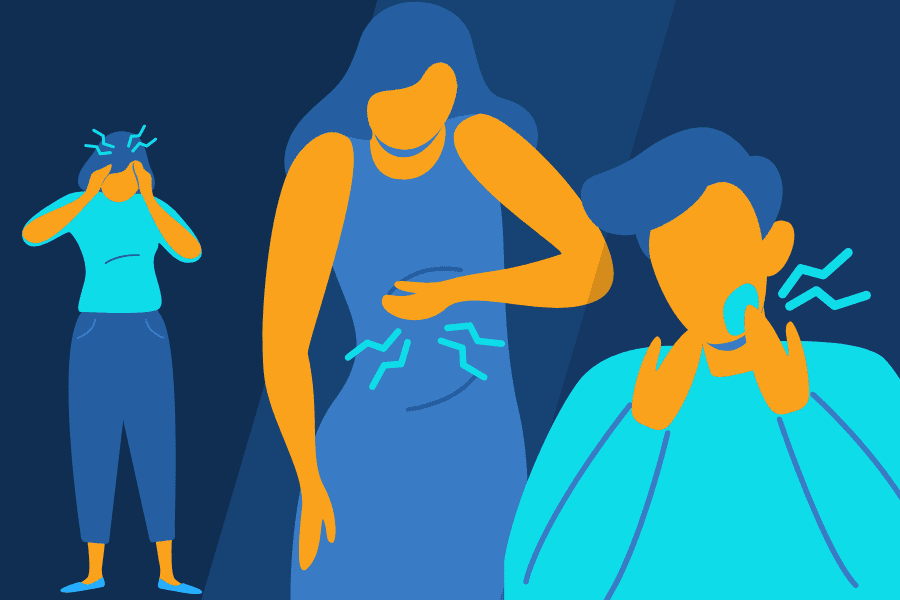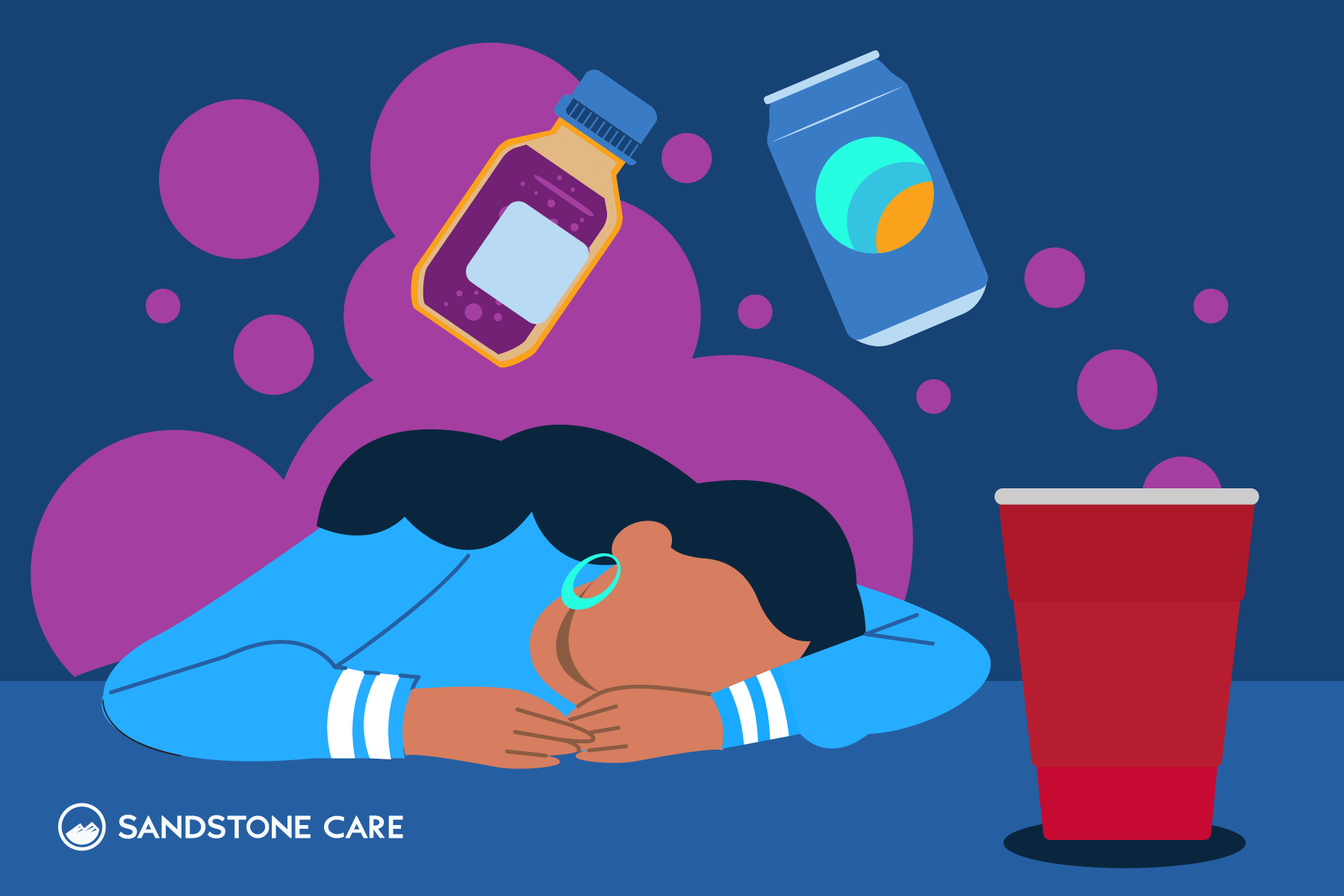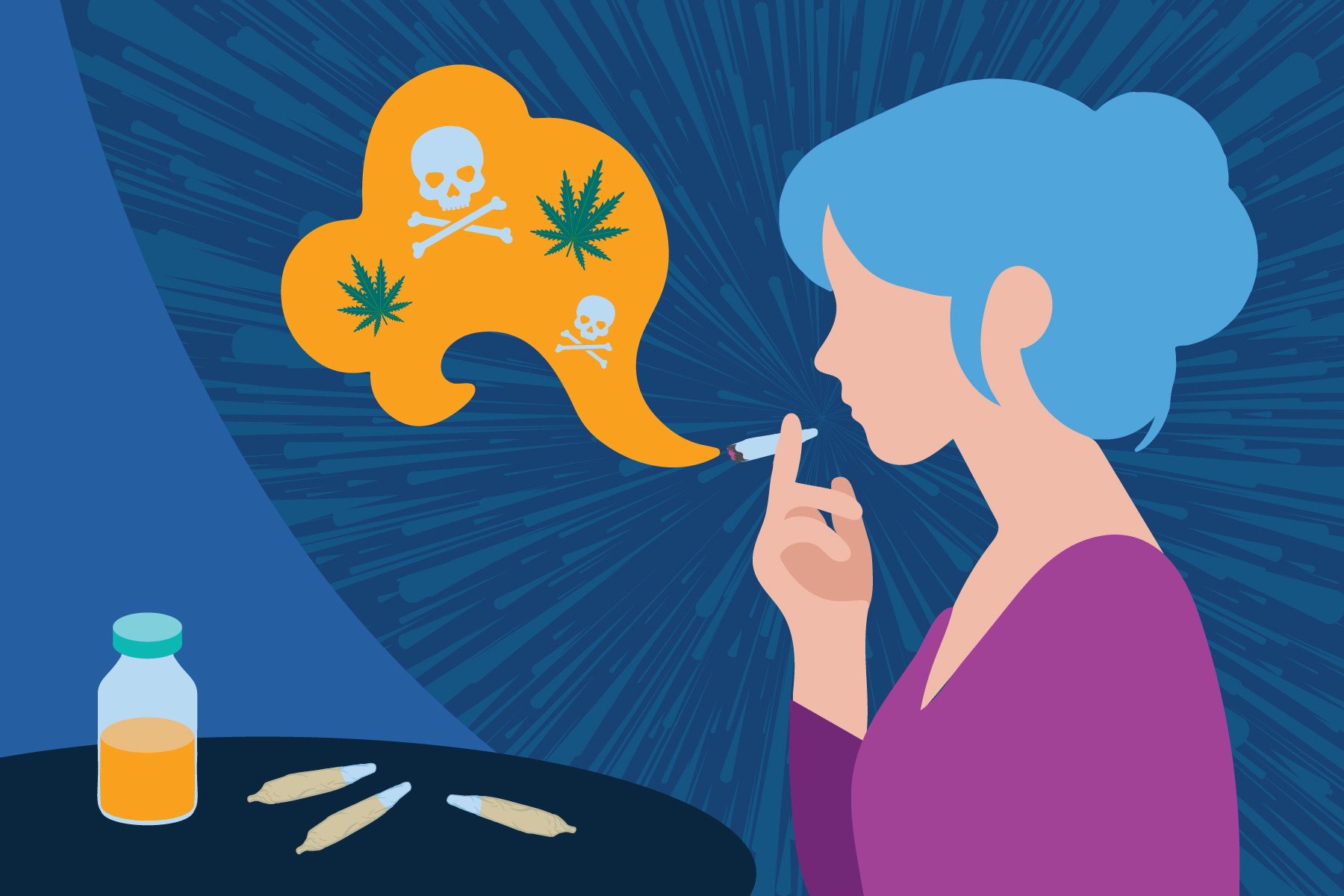Tramadol Overview
What Is Tramadol?
Tramadol is a pain medication used for moderate to moderately severe pain.
Tramadol is also referred to by the brand name Ultram and is FDA-approved for pain relief when prescribed.
It is a synthetic opioid, meaning it is man-made and not a natural opiate. It is commonly compared to other medications such as morphine, oxycodone, and fentanyl. However, it is considered to be a relatively weaker opioid.
Over the years, tramadol has become more commonly prescribed and has increased in use.
Tramadol was once thought to be low-risk. However, there is growing concern surrounding its use as it can cause serious adverse effects and lead to misuse, dependence, and addiction.
What Is Tramadol Used For?
Tramadol, when prescribed, is used for pain relief.
Because of its abuse and addiction potential, it is typically used for patients who do not respond to other non-opioid medications.
Immediate-release tramadol is generally used for pain that lasts less than a week.
For pain that goes past a week, extended-release tramadol may be used for pain control that needs 24-hour management.
Tramadol is also used off-label as a treatment for restless leg syndrome and other conditions.
What Does Tramadol Do?
Tramadol acts on the central nervous system (CNS) to help treat pain.
Opioid drugs like tramadol don’t only block pain but can also produce a high and make users feel calm when misused.
A person may misuse tramadol to achieve its “euphoric” effects or as a way to self-medicate.
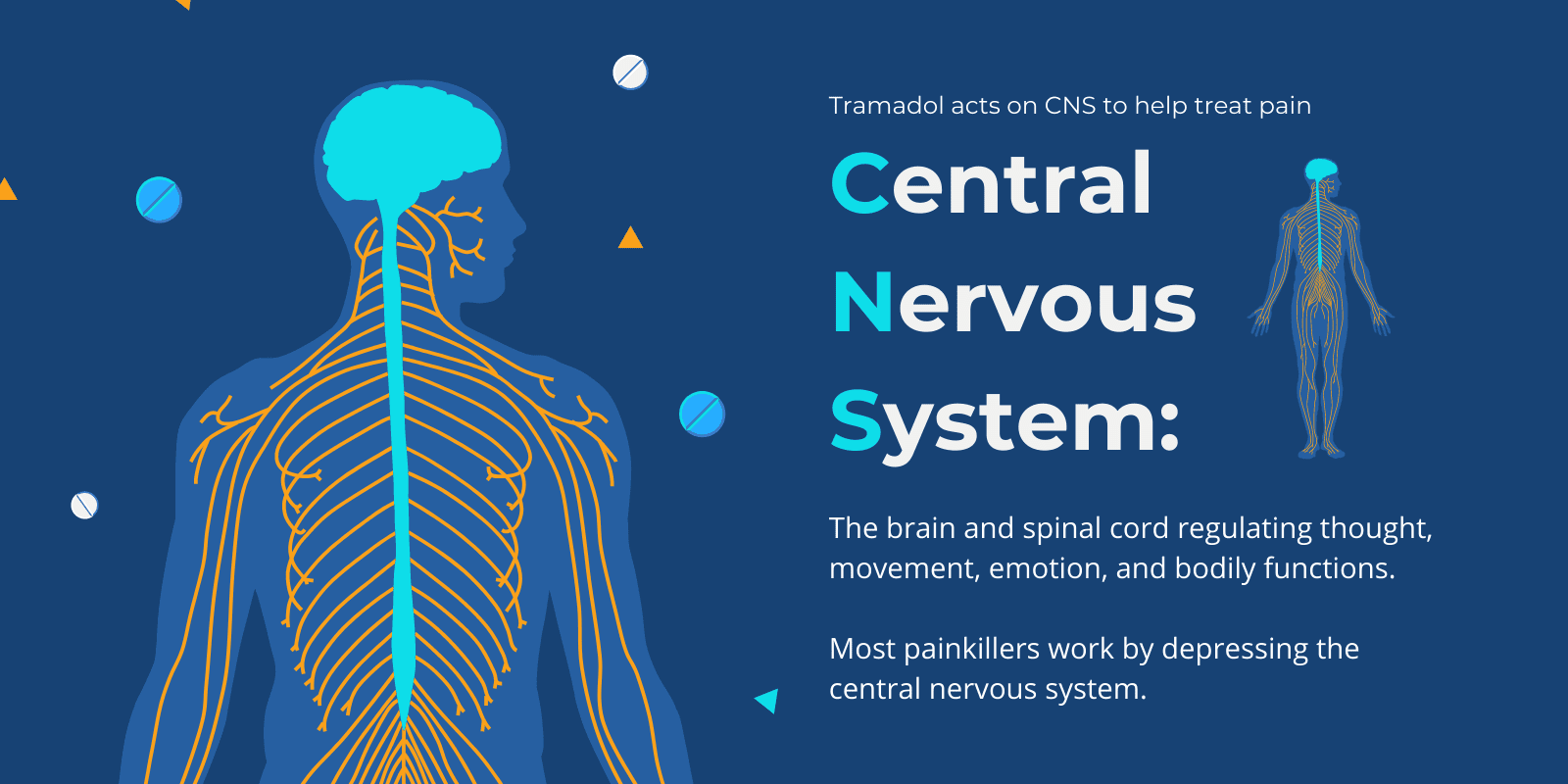
Is Tramadol A Narcotic?
Yes, tramadol is a type of narcotic medicine called an opioid, according to the FDA.
According to the DEA, besides medical purposes, narcotics can produce a sense of well-being by helping reduce tension, anxiety, and aggression.
These effects can contribute to tramadol abuse and make a person continue to seek the drug to feel better.
Is Tramadol Addictive?
Tramadol can be habit-forming, and the risk increases with prolonged use.
Those who use tramadol for a long period may develop both mental and physical dependence.
While it is a relatively less potent opioid, tramadol still has the potential for misuse and addiction.
Individuals with addictions to other substances are at a higher risk of developing an addiction to tramadol.
What Does Tramadol Do To Your Brain?
Tramadol changes how the brain and nervous system respond to pain.
Tramadol activates opiate receptors in the brain. These receptors can produce sensations that contribute to pain relief and pleasure.
Tramadol users can develop psychological dependence, meaning that even after the physical need for a drug goes away, a person may still think or talk about using drugs and be affected in their daily lives.
Tramadol Dosage
What Does Tramadol Look Like?
Tramadol can come as a tablet, liquid, or capsule.
In the form of a pill, it is usually white and round or oblong-shaped.
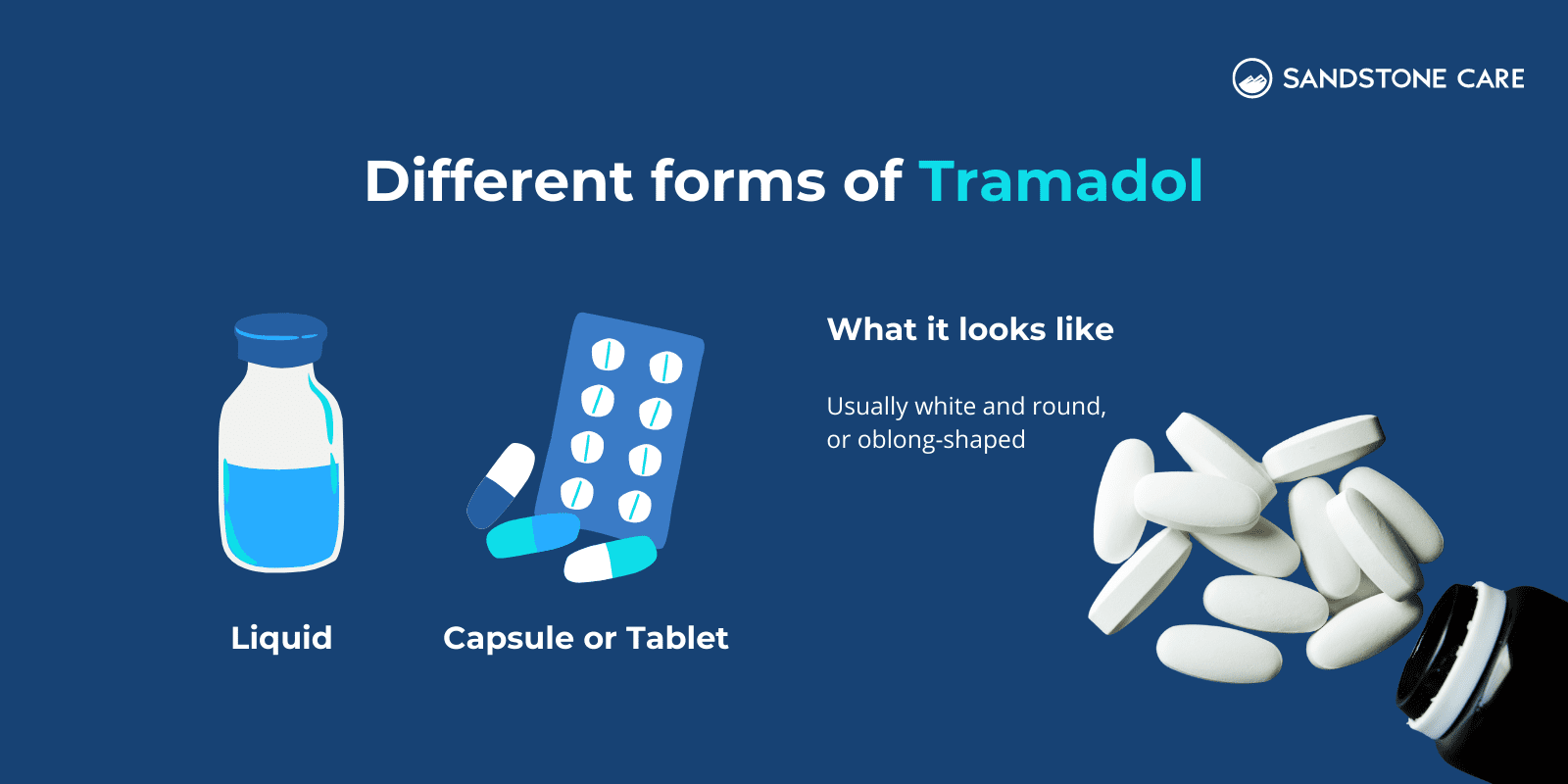
How Do You Take Tramadol?
A tablet, capsule, or liquid version of tramadol may be taken by mouth with or without food.
Tramadol should not be chewed, crushed, or dissolved before taking.
What Is The Typical Daily Dosage Of Tramadol?
The dosage for immediate-release tramadol usually is around 50 mg, while the dosage for the extended-release capsules usually begins at 100 mg.
When prescribed, the daily dosage of tramadol can depend on various factors such as the person’s age, weight, and the reason it is being prescribed.
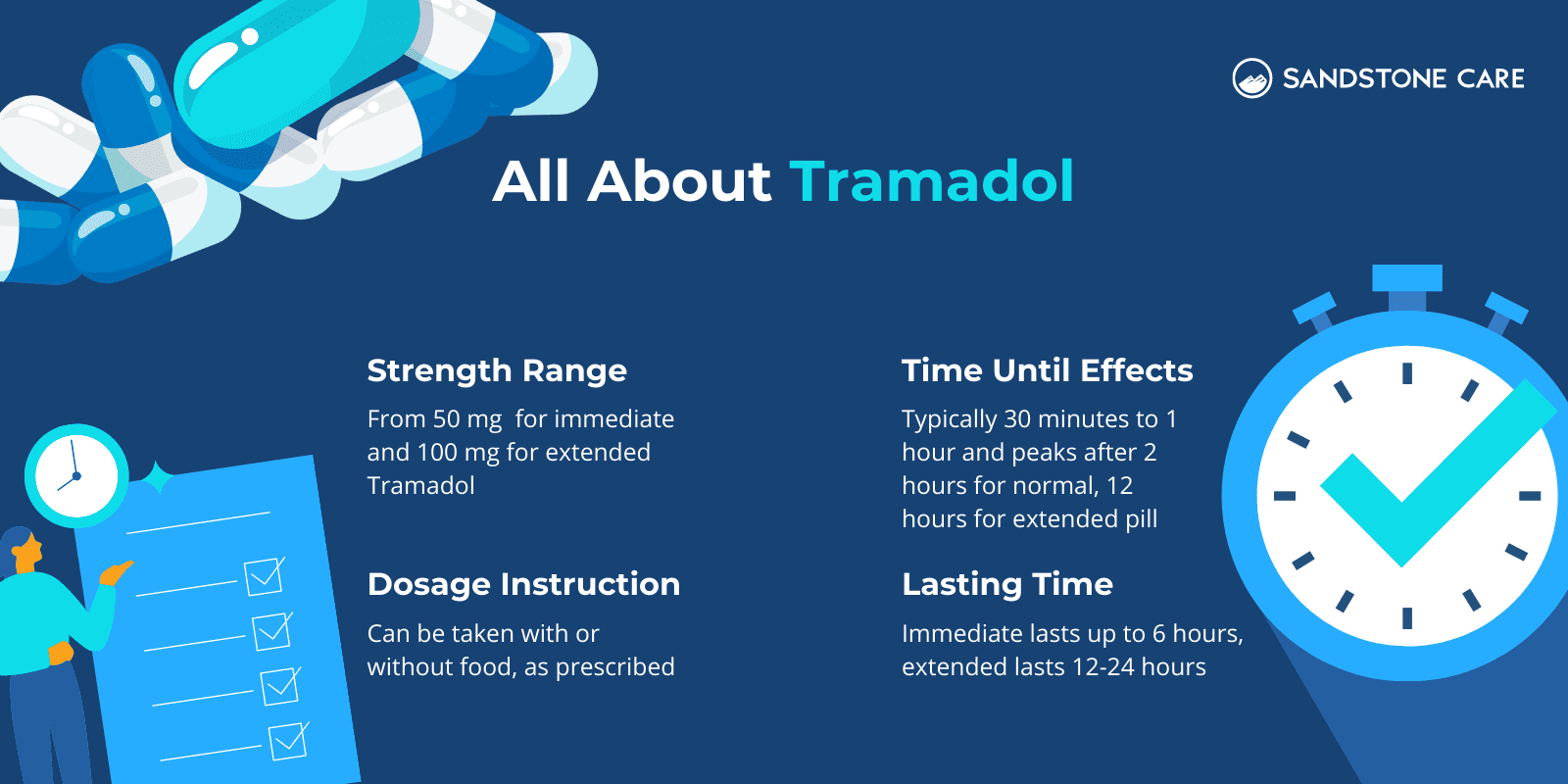
How Does Tramadol Work To Relieve Pain?
Tramadol is believed to relieve pain by binding to opiate receptors in the central nervous system.
Tramadol alters how the brain responds to pain. In short, it interrupts nerve pain signals between the brain and the body.
Is Tramadol A Strong Painkiller?
Tramadol is considered a strong painkiller used to treat moderate and severe pain.
However, when compared to other opioids, tramadol is relatively less potent. Because of this, it is generally more commonly prescribed than other opioids, yet it still comes with serious risk and misuse potential.
Is Tramadol A High-risk Medication?
Tramadol can cause serious or life-threatening breathing problems.
Individuals who take tramadol are also at risk of other adverse effects, addiction, and overdose.
According to the CDC, overdose deaths involving opioids increased from an estimated 70,029 in 2020 to approximately 80,816 in 2021.
Can You Overdose On Tramadol?
Yes, a person can overdose on tramadol.
Symptoms of tramadol overdose can include:
- Decreased pupil size
- Slow breathing
- Difficult breathing
- Drowsiness or extreme sleepiness
- Inability to respond or wake up
- Slowed heartbeat
- Muscle weakness
- Cold and clammy skin
If you believe a person is experiencing a tramadol overdose, seek medical help immediately and call 911.
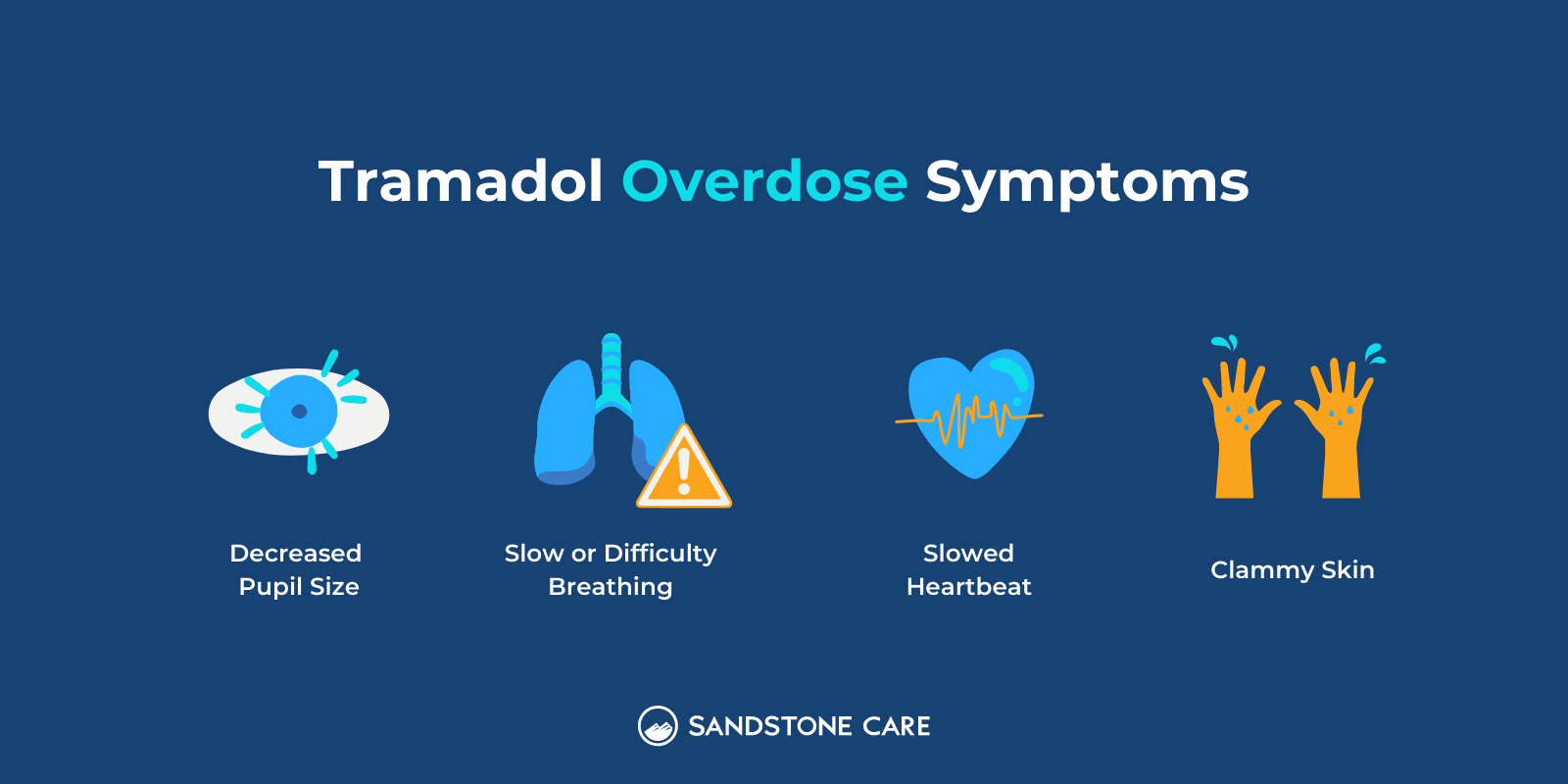
Tramadol Uses
How Long Does It Take For Tramadol To Kick In?
A person may feel the effects of tramadol kicking in around 30 minutes to an hour after taking it.
Immediate-release tramadol usually peaks around 2 hours after administration, whereas extended-release tramadol usually peaks around 12 hours.
How Long Does Tramadol Relieve Pain?
Immediate-release tablets or capsules may relieve pain for up to 6 hours, while extended-release lasts for around 12 to 24 hours.
Is It Ok To Take Tramadol Every Night?
Tramadol should only be taken as prescribed.
It is crucial to not take any more medication per day than what your doctor has prescribed you. Failing to do so can cause serious effects and overdose.
When taken for a long period, it can become habit-forming and lead to dependence or addiction.
It can also be important to note that taking tramadol at night may also have an effect on sleep.
However, when taking this medication, it is essential to take it at the same time every day, with the time in-between each dose of tramadol spread out evenly.

When Should You Not Take Tramadol?
You should not take tramadol while driving or operating machinery as it can cause dizziness, drowsiness and affect your coordination.
You should also talk to your doctor if you are pregnant, breastfeeding, or planning to become pregnant, as it may decrease fertility in men and women.
Taking tramadol while breastfeeding can affect the baby, causing shallow breathing, confusion, extreme sleepiness, or limpness in breastfed infants.
It should also not be used to treat individuals under 12.
It is important that your healthcare provider is aware of any medications, supplements, or herbal products that you are taking to make sure to decrease the risk of drug interactions.
If you have any conditions that involve the blocking or narrowing of your stomach or intestines, you should let your doctor know.
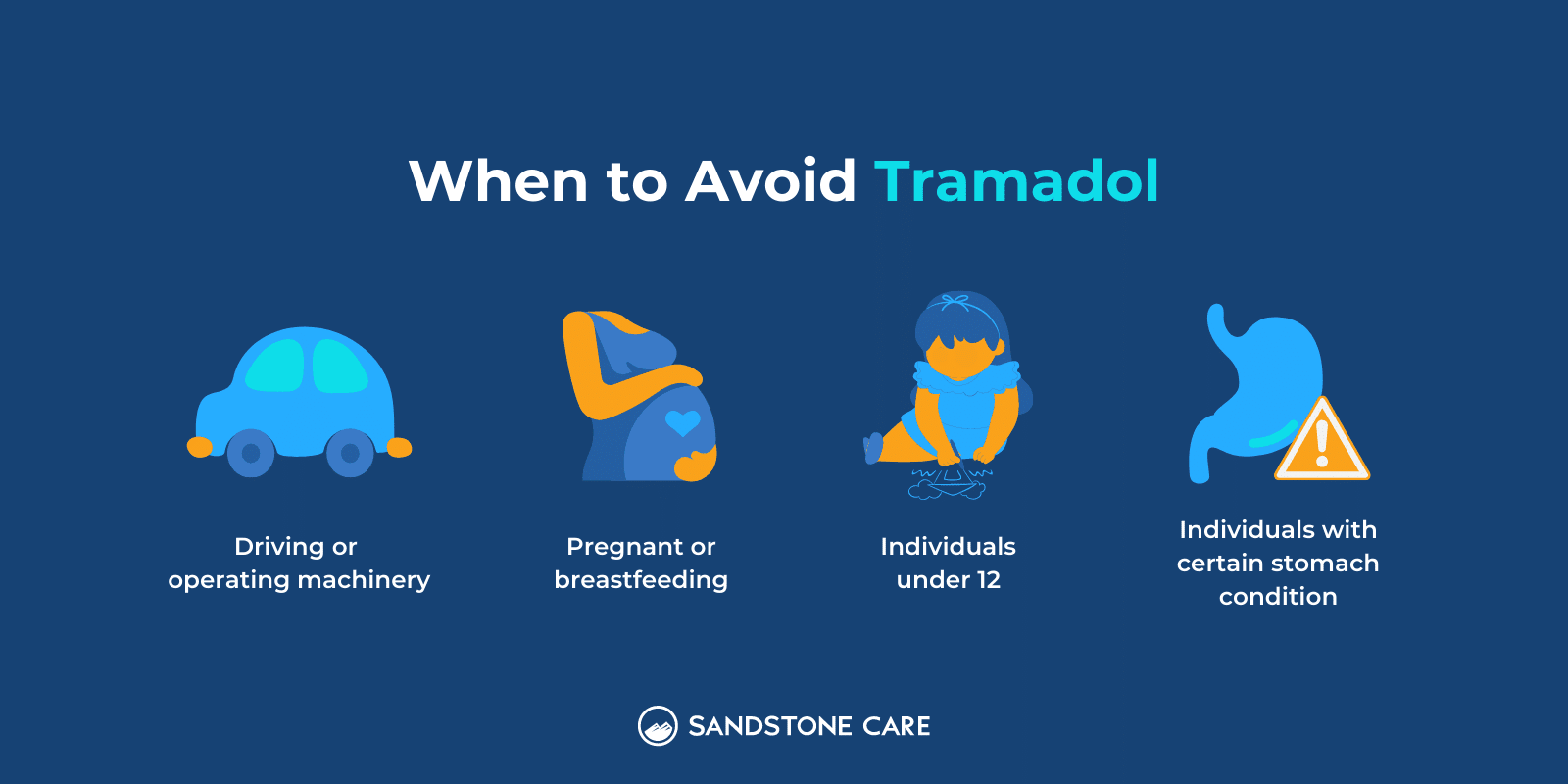
What Should You Not Mix With Tramadol?
You should let your healthcare provider know if you are taking MAO inhibitors, as they can interact with tramadol.
Mixing alcohol with tramadol can also cause serious drug interactions and should be avoided.
Other types of medications that you should tell your doctor about can include:
- Blood thinners
- Certain medicines for migraine headaches
- Selective serotonin reuptake inhibitors (SSRIs)
- Serotonin–norepinephrine reuptake inhibitors
- Tricyclic antidepressants
It is also important to let your healthcare provider know about any herbal supplements you are taking, especially if you are taking St. John’s Wort and tryptophan.
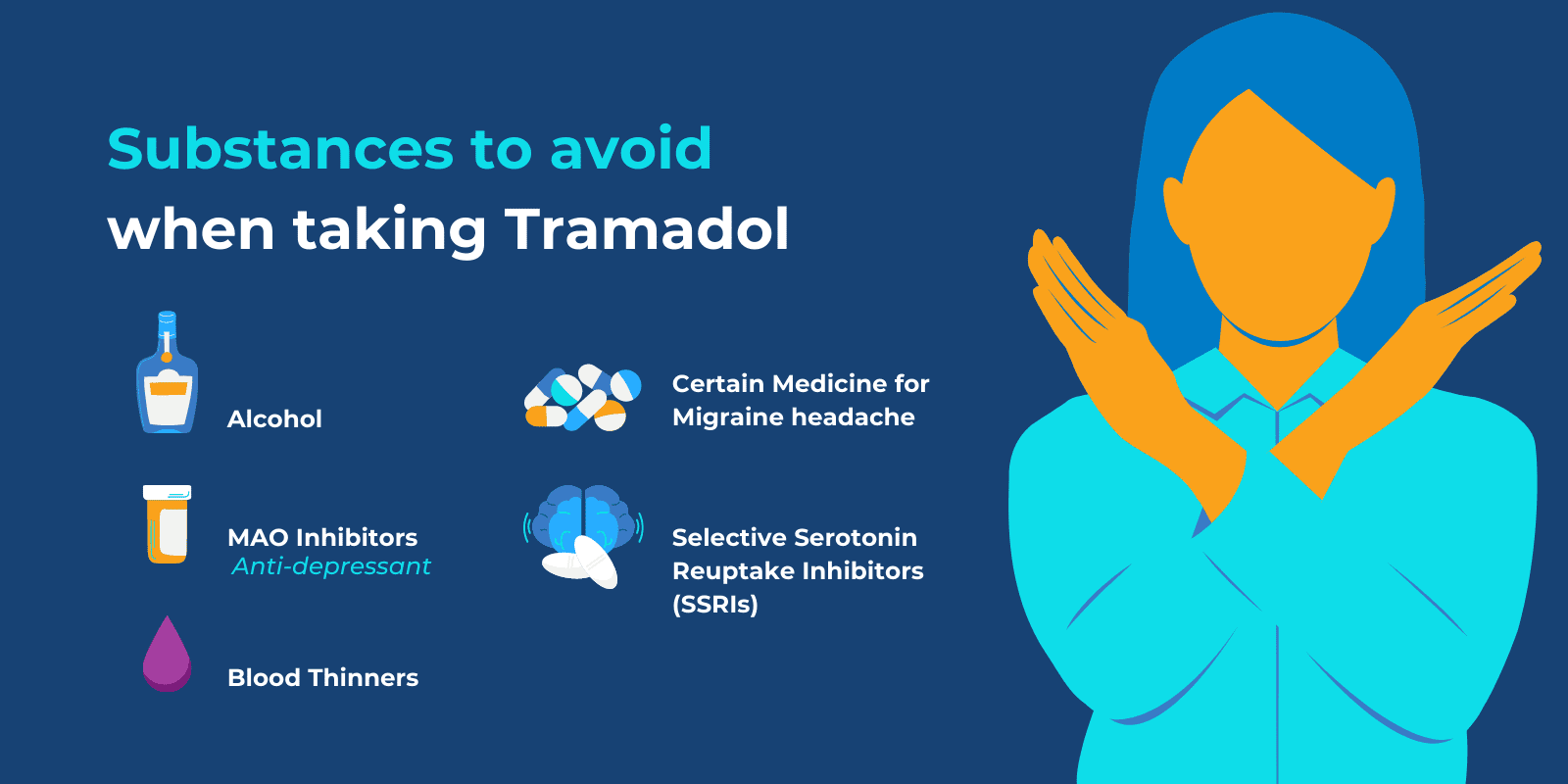
How Long Does Tramadol Stay Effective In The Body?
The effects of immediate-release tramadol in the body can be felt for about 6 hours, and extended-release tramadol can be felt for 12 to 24 hours.
Side Effects of Tramadol
What Are The Side Effects Of Tramadol?
Side effects may include:
- Drowsiness or sleepiness
- Nervousness
- Headache
- Uncontrollable shaking
- Mood changes
- Muscle tightness
- Indigestion
- Heartburn
- Dry mouth
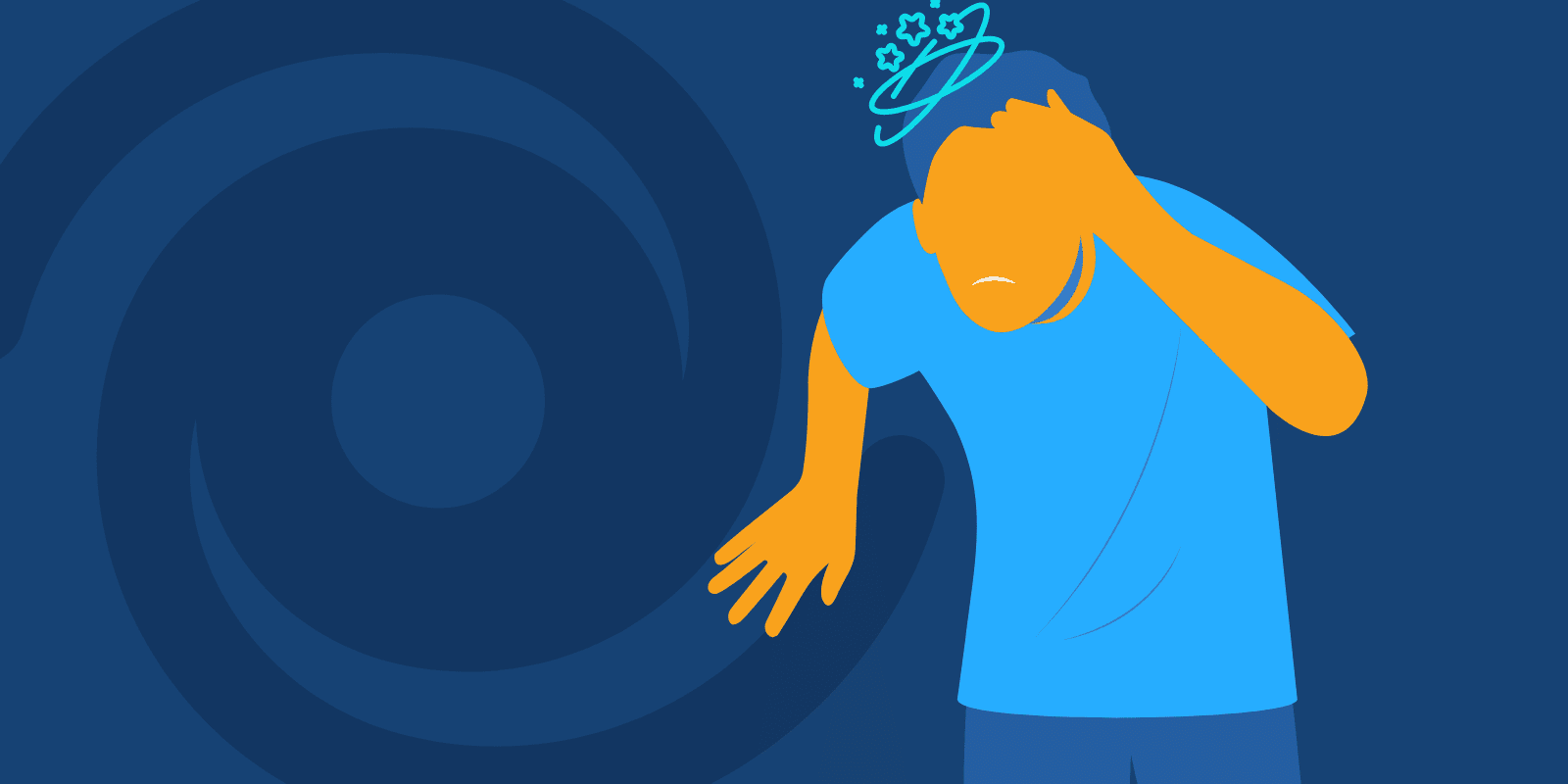
Other serious side effects can include:
- Hives, rashes, or blisters
- Difficulty swallowing or breathing
- Swelling
- Agitation or irritability
- Fever
- Fast heartbeat
- Confusion
- Nausea and vomiting
- Loss of appetite
- Sweating or shivering
- Spasms
- Cramps
- Loss of consciousness
- Hallucinations
- Seizures
If you or a loved one are experiencing adverse events related to tramadol use, seek medical help. If you are in an emergency, call 911.
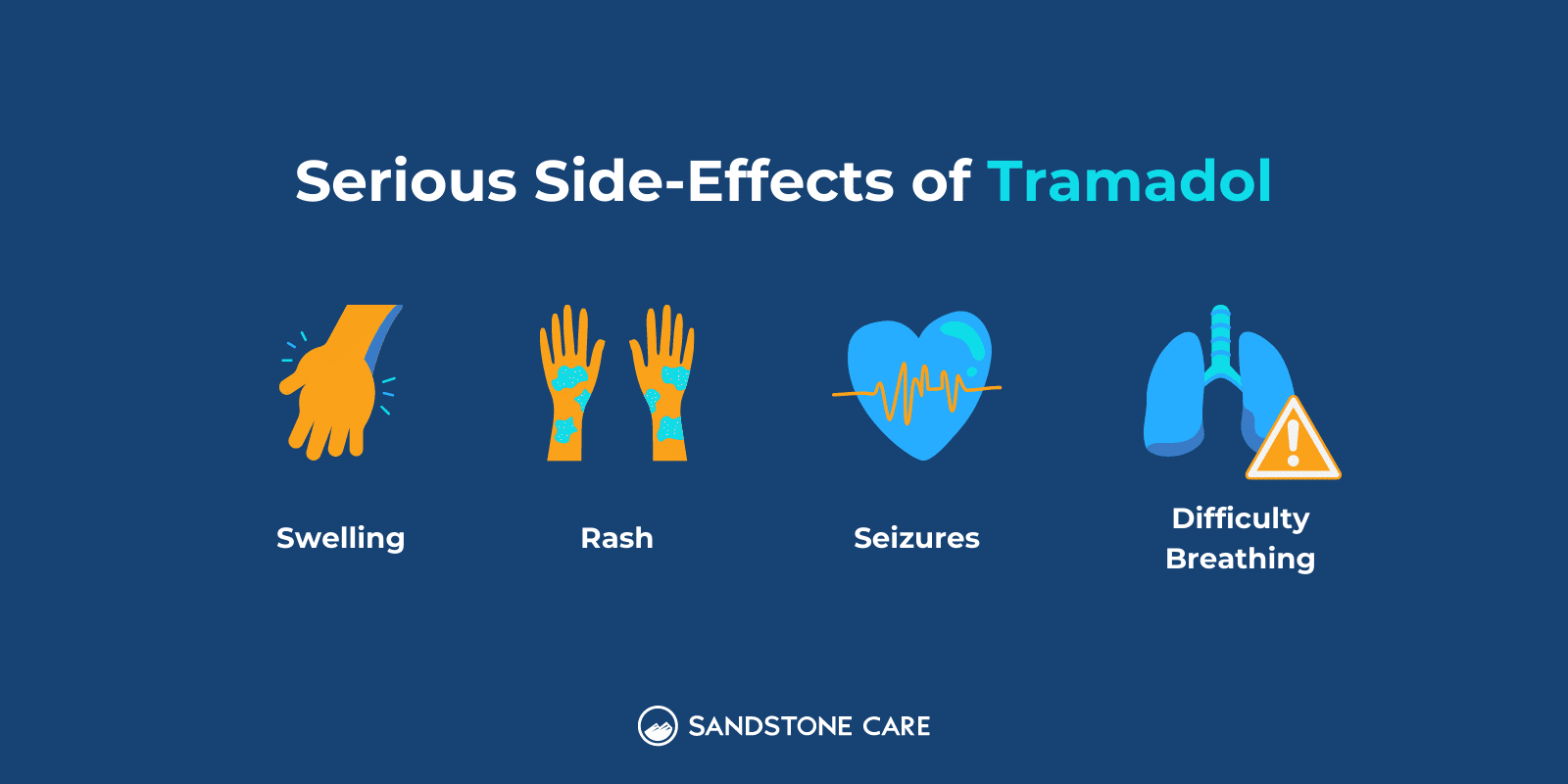
How Long Does The High From Tramadol Last?
Some people may misuse tramadol to produce a high and achieve a sense of euphoria, relaxation, or calmness.
A tramadol high may also cause a person to feel numb or detached from their body.
The effects of tramadol usually wear off after about 6 hours if taking immediate-release tablets.
However, when misused, it can be unpredictable and lead to numerous adverse effects.
What Are The Long-term Effects Of Taking Tramadol?
Long-term use of tramadol can cause damage to the liver and kidneys.
Tramadol can also cause serious and life-threatening breathing problems.
Serotonin syndrome may also occur as a result of tramadol use. Serotonin syndrome involves mental status changes, neuromuscular hyperactivity, and autonomic hyperactivity.
How Does Tramadol Make You Feel?
Individuals may misuse tramadol to produce a high that can make a person feel relaxed and calm or elevate their mood.
However, it can also make a person feel dizzy, nauseous, or nervous, among other side effects.

Will Tramadol Calm Me Down?
Tramadol is used for pain relief and can make a person feel calm and relaxed.
Because it affects serotonin and norepinephrine levels in the brain, tramadol can relieve pain and consequently cause a person to feel less anxious.
Tramadol can cause the heart rate to slow, respiration rates to decrease, and blood pressure to lower, making a person feel calmer.
However, when misused and used for reasons other than what it is intended for, tramadol can also cause side effects of depression, anxiety, and mood swings.
What Organs Are Affected By Tramadol?
The organs that are most commonly affected by tramadol include:
- Central nervous system
- Neuromuscular organs
- Gastrointestinal organs
Other systems that can be affected by tramadol include the endocrine system, cardiovascular, visual, dermatologic, and genitourinary.
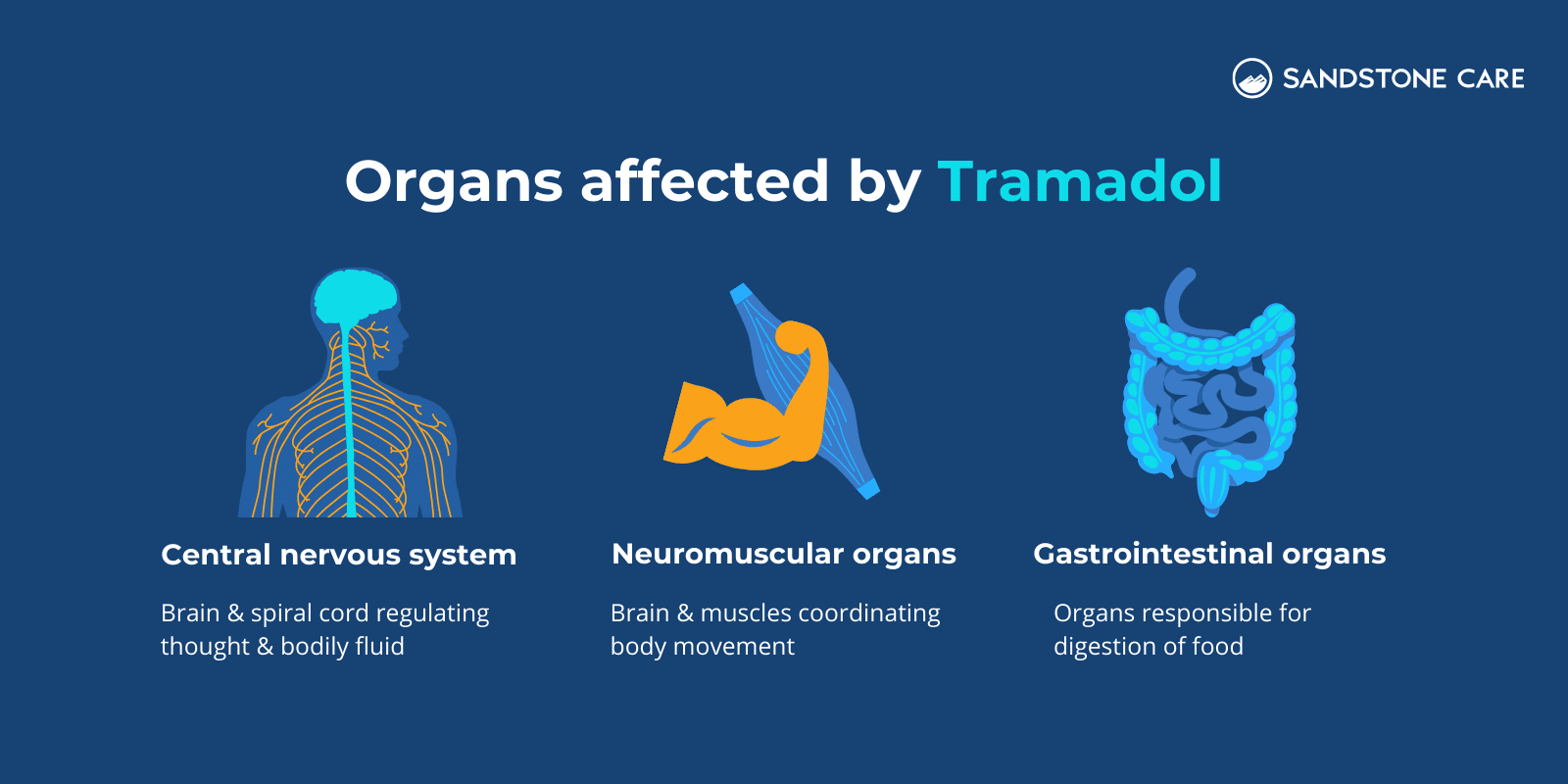
Is Tramadol Damage Reversible?
Some side effects of tramadol may go away as the body adjusts or after a person stops taking it.
If prescribed tramadol, it is important to let your doctor know of any adverse effects to help reduce the risk of serious damage.
However, some effects of tramadol on the brain and body are thought to be long-term and possibly permanent.
Tramadol Addiction Treatment
What Is The Best Treatment For Tramadol Addiction?
The best treatment for tramadol addiction typically includes a combination of therapy and medication. Medications such as buprenorphine and naltrexone have been shown to be effective in treating tramadol addiction.
Behavioral therapies, such as cognitive-behavioral therapy, can also be helpful in addressing the underlying psychological issues that may contribute to addiction. Additionally, support from family and friends can be an important aspect of treatment.
It’s also important to find a qualified addiction treatment professional or facility that can provide a comprehensive treatment program that addresses the physical, emotional, and social aspects of addiction.
How Long Does Tramadol Get Out Of Your System?
Tramadol has a half-life of about 6 hours.
A drug’s half-life refers to the amount of time it takes for a drug’s active substance to be reduced by half in the body.
Does Tramadol Need To Be Weaned Off?
Tramadol should be tapered, meaning the dosage should be slowly decreased, with the end goal of fully discontinuing use.
If you plan on stopping your medication or lowering your dose, it is important to first consult with your doctor.
By safely weaning off of tramadol, you can reduce or better manage withdrawal symptoms.

How Do You Reverse The Side Effects Of Tramadol?
Naloxone may help in the partial reversal of the side effects of tramadol.
Naloxone may reverse the opioid effects of tramadol but not the serotonin or norepinephrine effects.
According to Clinical Toxicology, diazepam and naloxone can be efficient as an antidote for the effects of tramadol.
Does Stopping Tramadol Cause Fatigue?
Fatigue can be a withdrawal symptom of tramadol.
Those who stop tramadol and experience withdrawal symptoms can become restless, experience insomnia, and have changes in their energy levels.
As the body is adjusting to new changes from the absence or decline of a drug, it can cause a person to feel extremely fatigued and tired.
What Are The Withdrawal Symptoms Of Tramadol?
Withdrawal symptoms of tramadol can include:
- Anxiety
- Insomnia
- Cravings
- Sweating
- Numbness
- Chills
- Cramps
- Nausea
- Diarrhea
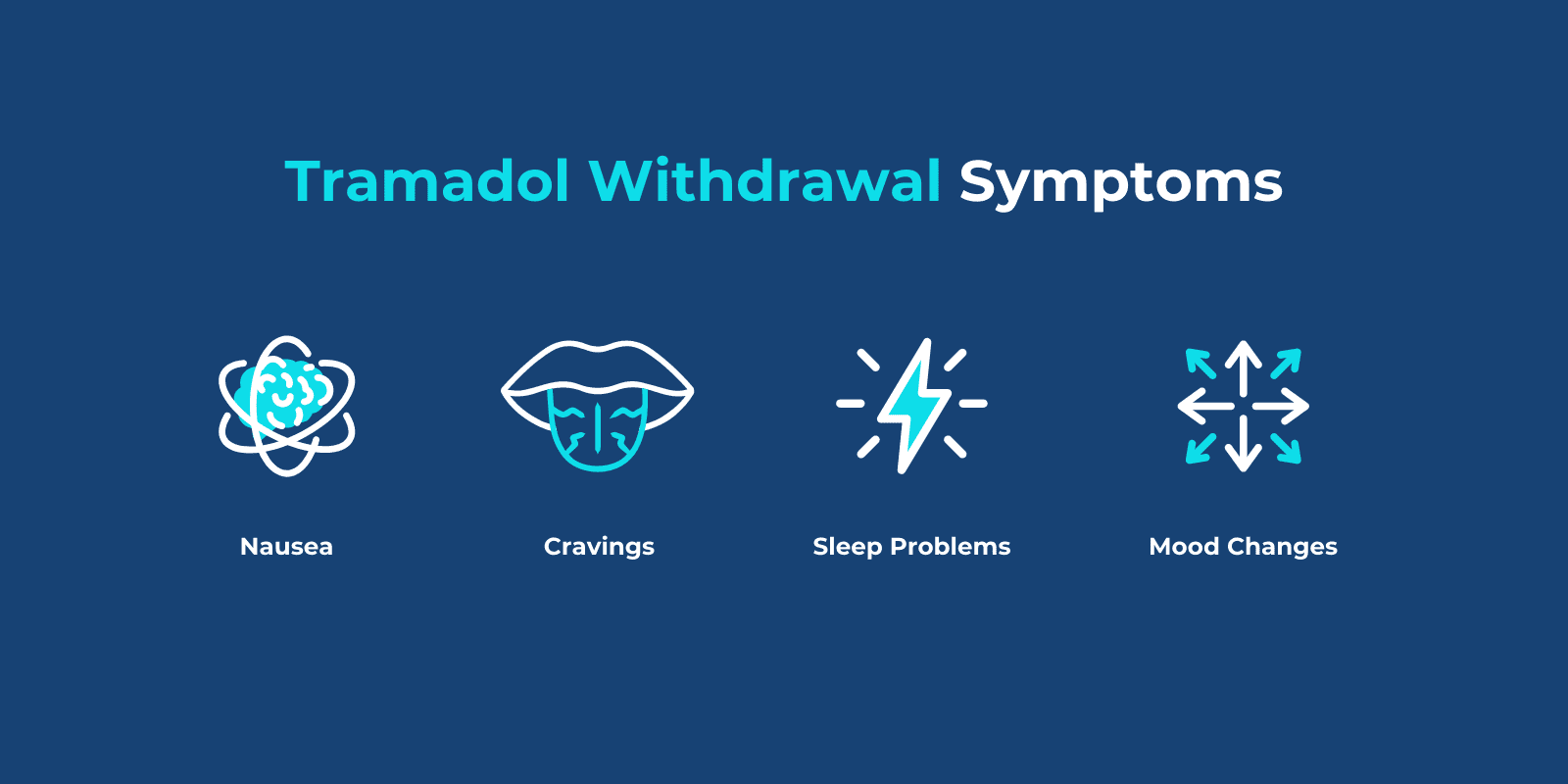
What Does Withdrawal From Tramadol Look Like?
A person experiencing withdrawal from tramadol may experience restlessness, extreme anxiety, and even panic attacks.
They may also have cravings for the medication, feeling the urge to seek the drug again to feel better temporarily.
Some individuals may also experience hallucinations or paranoia. They may see or hear things that aren’t real or feel an extreme distrust or fear that is unrealistic.
Withdrawal from tramadol can look different from person to person but is often uncomfortable. That being said, it is important to manage withdrawal symptoms safely with the guidance of a medical professional.
How Do I Help Someone Struggling With Tramadol Misuse?
If you or a loved one are struggling with tramadol abuse or addiction, it is important to seek professional help.
Talk to a doctor about your concerns and get a proper diagnosis and treatment.
Struggling with substance use or addiction is not easy, and it often becomes lonely. It can be hard to reach out for help, but it is important to know that you are not alone and there is help for you.
If you are looking into treatment centers, SAMHSA has a behavioral health treatment services locator that serves as an anonymous and confidential source of information for individuals seeking help for substance use and mental health disorders.
It is important to find care that fits your needs the best. Each individual is different, and your treatment plan should be specifically designed for you.
FAQ
You have questions. We have answers.
Our goal is to provide the most helpful information. Please reach out to us if you have any additional questions. We are here to help in any way we can.
Yes, when prescribed, tramadol can be helpful with chronic pain.
It is commonly used for back pain, sciatica, or pain following spine surgery.
Hydrocodone is more potent than tramadol.
Hydrocodone is also a prescription opioid painkiller. According to the Annals of Emergency Medicine, tramadol seems to provide inferior analgesia to hydrocodone-acetaminophen in ED patients with acute musculoskeletal pain.
The effects and strength of tramadol and codeine appear to be similar and almost equally effective.
Both drugs are used to treat moderate to severe pain.
Tramadol and morphine are similar analgesics. However, they are not the same.
High doses of oral tramadol have been shown to have similar effects to low doses of morphine. Although, studies suggest that tramadol may have a lower rate of typical opioid side effects such as constipation and neuropsychological symptoms.
Prolonged use or tramadol overdose may cause liver damage, including acute liver failure.
A person can decrease the risk of liver damage caused by tramadol by avoiding taking it with alcohol and other substances.
Opioids, like tramadol, are generally associated with higher instances of adverse effects in individuals who already have existing liver damage, according to Hepatitis Monthly. Those who do have existing liver problems are typically advised to avoid opioids.
Tramadol may affect an individual’s energy and mood levels because it impacts serotonin and norepinephrine reuptake.
By binding to opiate receptors, tramadol can block pain and also cause a person to feel more relaxed and often happier.
However, when misused, a person may be trying to produce feelings of “euphoria” and achieve a high. It may temporarily make someone feel happy in a sense because of the changes in brain chemicals, but it leads to more problems and adverse effects in the long run.
While tramadol can cause damage to a person’s body, it can also cause long-term changes to the brain.
According to CNS & Neurological Disorders, long-term use of tramadol can be linked with a number of neurological disorders, such as seizures, serotonin syndrome, Alzheimer’s disease, and Parkinson’s disease.


Let’s take the next steps together
Tramadol is an opioid medication used to treat moderate to severe pain, however, has a potential for abuse and addiction. Sandstone Care is here to support teens and young adults with mental health and substance use disorders.

